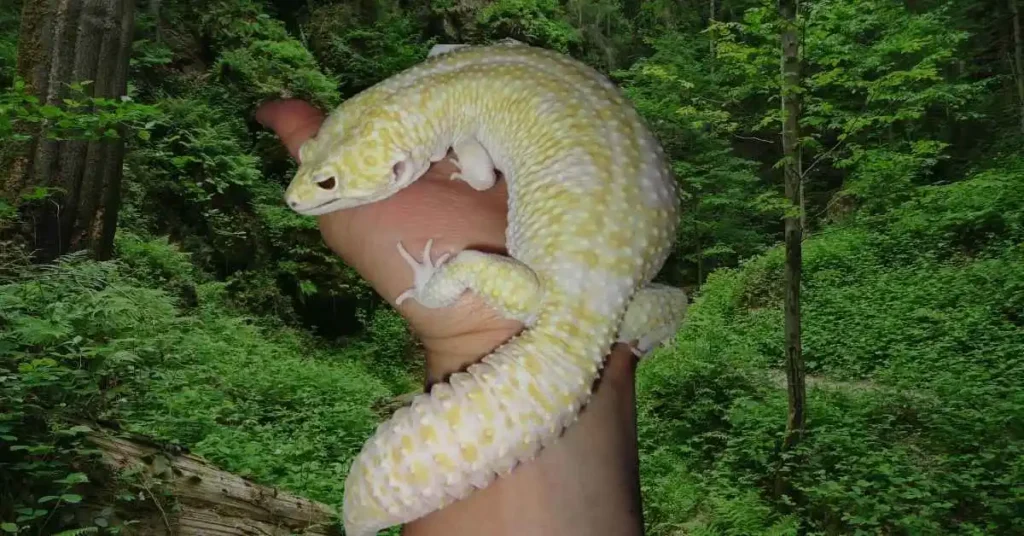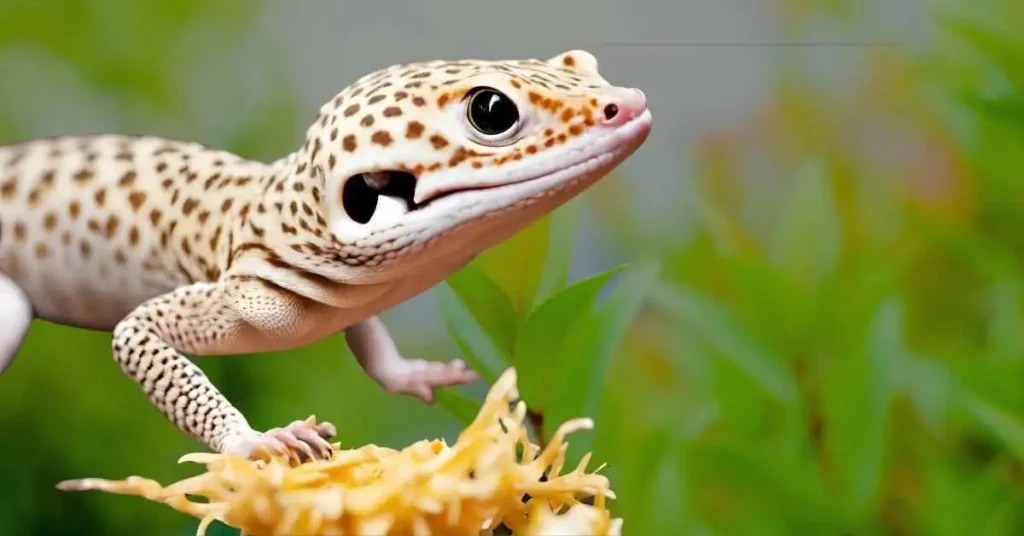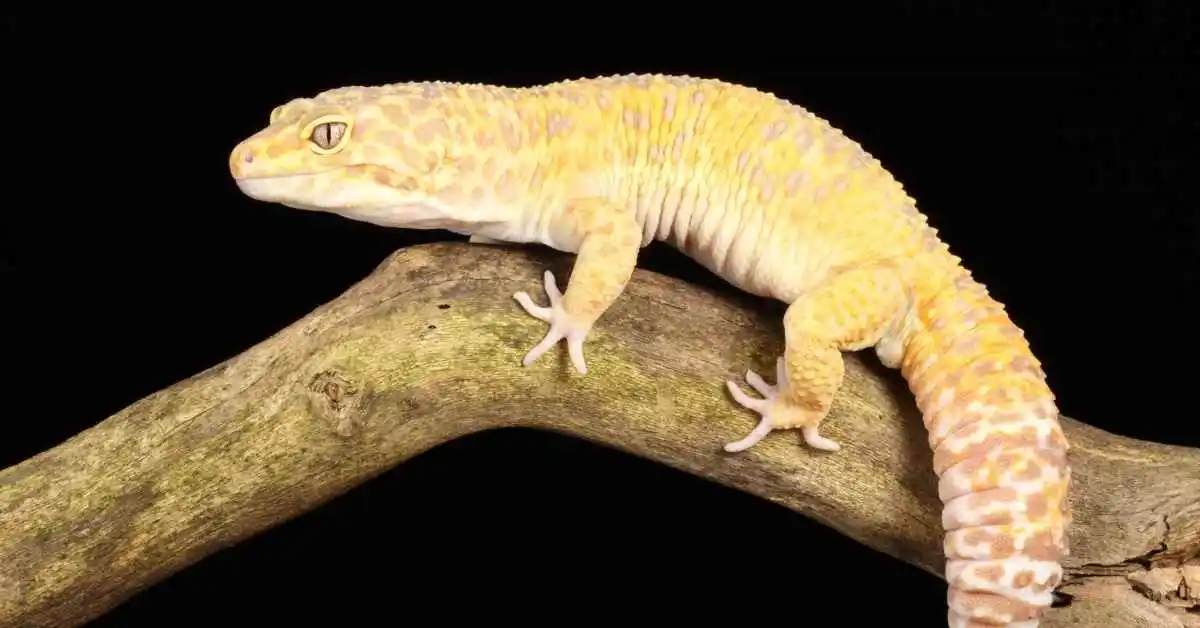Giant Leopard Gecko
The Giant Leopard Geckos are generally found in the desert regions of India, Pakistan, and Iran. These Geckos are very famous for their color and they are known for their size, they can grow up to about 10 to 14 inches which can be brown in color and they are kept as pets. They can be kept in warm environments, they grow quickly, and good food is very important to feed them.
Facts about Giant Leopard Gecko:
| Common Name | Giant Leopard Gecko |
| Scientific Name | Eublepharis macularius |
| Weight | Typically 80-150 grams (3-5.5 ounces) |
| Size: | Average length of 10-12 inches (25-30 cm) |

Size and Coloration of Giant Leopard Gecko:
These different sizes and these animals are very popular they are about 10 to 12 inches in length and if well cared for they can grow up to 14 inches and weigh up to 150 grams. Their body color is yellow and there are stripes on their body.
Giant Leopard Gecko Behavior:
They exhibit very interesting behavior. They usually come out at night and collect their food. They huddle together in circles and are quiet. It has to be provided and it communicates with each other through body language making sounds .t is not its own food, eats insects like crickets, and pigeons. They mostly live in forests and desert areas and if chased by predators, they hide in crevices.
Range and Environment of Giant Leopard Geckos:
They are usually found in certain areas of Pakistan, Afghanistan, and Iran, and mostly in desert and scrub areas. Because there they find their prey easily, in addition, they like to remember stones to avoid the heat or they look for crevices. Their diet includes small insects. They hunt them at night. Good feeding is good for their health.
Food and Diet of Giant Leopard Gecko:
They eat insects in their diet which includes crickets, and Dubia roaches. and they eat them in 15 to 20 minutes. Adults need to be fed every other day while the young need to be fed daily. Keep the humidity level between 80% and 58% in a place where you can provide them with small pieces of fruit and they are usually fed at night.

Common Health Problems:
If they are not properly cared for, they can suffer from many health problems such as bone disease due to calcium deficiency, respiratory infections, and stones. Do not use them as they may injure their body. Consult a doctor for proper health care. Constipation may occur due to a lack of food.
Handling and Care Tips :
Always be gentle with them and make them feel your presence. Use both hands when picking them up so they don’t injure them. Also, limit their handling sessions when they are new to your home. Also, get them regularly checked up and make a schedule for them to consume good food for better health.
Giant Leopard Gecko As a Pet:
They can be kept as pets due to their size and excellent coloring. They are very easy to care for. They can make excellent companions and come in majestic colors and patterns that add to their beauty. They often live 15 to 20 or even 25 years in captivity.
Essential Housing Requirements for Giant Leopard Geckos:
Enclosure:
It should be cleaned daily, otherwise once or twice a week is necessary. It should have a humidity level of 30-40 percent. It can also be used with carpets and paper towels.
| Aspect | Details |
|---|---|
| Enclosure Size | Minimum 20-gallon tank |
| Type of Enclosure | Glass terrariums or plastic containers |
| Heat Source | Under-tank heater or heat mat |
| Decoration & Enrichment | Climbing branches, rocks |
Substrate:
Recommended Substrates:
Use reptile enclosures in their habitats that maintain humidity levels and provide them with an environment that they would naturally experience in the wild. The living space should be completely changed in at least three to four months. Paper towels or newspapers can also be used.
Avoid Substrates:
Also, do not use wooden shavings for them as they can cause breathing problems and they cannot retain moisture.
Heating and Lighting:
It is very important to maintain the temperature in their living space. The normal temperature should be 80 to 90 degrees Fahrenheit. The night temperature is 70 to 75 degrees Fahrenheit. Should be 50%. Reptiles can also use it to provide heat. It is important to use lighting in their habitat to help maintain temperature. UV lights can be provided through heat lamps or low-wattage bulbs, providing 10 to 12 hours of sunlight per day. Use light to help them absorb vitamins and calcium and use a flow meter to check temperature.
Humidity:
Maintaining its levels in their habitat is very important for the health of Giant Leopard geckos. Keep its level between 60 to 80 percent and use a hygrometer to check the humidity level regularly. Moisture can also help maintain hydration levels to increase their habitat. It can help a lot in prevention.
Breeding Process of Giant Leopard Gecko:
Giant Leopard Gecko are egg-laying animals, breeding occurs in spring and summer when the temperature rises, with males moving their tails to attract females. After mating, the female lays one or two eggs. They usually lay their eggs in a hidden place to avoid predators.
LifeSpan of Giant Leopard Gecko:
In Captivity:
These geckos can live 10 to 20 years in captivity and some even reach up to 25 years. Because they are given a good environment in which the temperature and humidity of their living space are taken care of which is very beneficial for their health and their food includes insects and crickets etc.
In the wild:
In the forests, their life span is five to 10 years because they are afraid of predators they are not well cared for and they are not provided with good food.
Price And Cost of Giant Leopard Gecko:
The cost of a Baby Gecko is 50 while a young Gecko also costs 50 to 100 and the cost of an adult gecko is 100 to 150 Dollars.
Conclusion
It is found in India Pakistan and Iran. They are very beautiful and people keep them as pets and they are usually found in rocks and deserts. They live in trees to protect themselves from predators and their better care helps them survive. They are 10 to 12 inches in size. Their age is fifteen to twenty years. They are very good for people and are kept as pets in homes.







